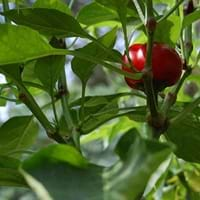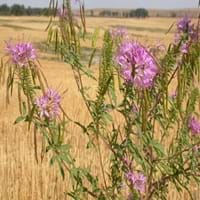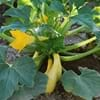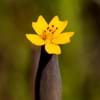Life Span
Perennial
Annual
Type
Vegetable
Herbs, Vegetable
Origin
Mexico, Central America, South America
South America, Argentina, Brazil
Types
Not Available
Skunk weed, Navajo spinach
Habitat
Temperate Regions
foothill woods, open Woodlands, Prairies, Roadsides
USDA Hardiness Zone
5-12
3-10
AHS Heat Zone
12-1
12 - 1
Sunset Zone
A1, A2, A3, H1, H2, 1a, 1b, 2a, 2b, 3a, 3b, 4, 5, 6, 7, 8, 9, 10, 11, 12, 13, 14, 15, 16, 17, 18, 19, 20, 21, 22, 23, 24
1a, 1b, 2a, 2b, 3a, 3b, 4, 5, 6, 7, 8, 9, 10, 11, 12, 13, 14, 15, 16, 17, 18, 19, 20, 21, 22, 24
Habit
Oval or Rounded
Upright/Erect
Flower Color Modifier
Bicolor
Bicolor
Fruit Color
Red, Green
Green
Leaf Color in Spring
Sea Green
Green
Leaf Color in Summer
Dark Green
Green
Leaf Color in Fall
Dark Green, Black
Green
Leaf Color in Winter
Green
Light Green
Leaf Shape
Lanceolate
Small elliptic
Plant Season
Spring, Summer, Fall
Summer
Sunlight
Full Sun
Full Sun
The pH of Soil
Neutral
Acidic, Neutral
Soil Drainage
Well drained
Well drained
Bloom Time
Indeterminate
Summer, Late Summer
Tolerances
Drought
Cold climate
Where to Plant?
Container, Ground, Pot
Container, Ground
How to Plant?
Seedlings
Seedlings
Plant Maintenance
Medium
Low
Watering Requirements
Average Water Needs, Do Not over Water
Medium, Requires regular watering, Requires watering in the growing season, Water occasionally
In Summer
Lots of watering
Lots of watering
In Spring
Moderate
Moderate
In Winter
Average Water
Average Water
Soil pH
Neutral
Neutral, Slightly Acidic
Soil Type
Loam
Sandy, Well drained
Soil Drainage Capacity
Well drained
Sandy, Well drained
Sun Exposure
Full Sun
Full Sun
Pruning
Remove damaged leaves, Remove dead branches, Remove dead leaves
Remove damaged leaves, Remove dead or diseased plant parts
Fertilizers
All-Purpose Liquid Fertilizer
All-Purpose Liquid Fertilizer, fertilize in growing season
Pests and Diseases
Aphids, Armyworm, Borers, Red blotch, Stink bugs, Worms
Insects, Leaf spot
Plant Tolerance
Drought, Salt
Cold climate
Flowers
Insignificant
Showy
Flower Petal Number
Single
Single
Fragrant Bark/Stem
No
Yes
Foliage Texture
Medium
Medium
Foliage Sheen
Glossy
Matte
Attracts
Aphids, Beetles
Bees, Butterflies
Allergy
Eye irritation, Skin irritation
Not Available
Aesthetic Uses
Beautification, Showy Purposes
Landscape Designing
Beauty Benefits
Not Available
Not Available
Environmental Uses
Air purification
Air purification, Food for insects, Shelter for wildlife
Medicinal Uses
Vitamin A, Vitamin C
Fever
Part of Plant Used
Fruits
Flowers, Leaves, Seeds
Other Uses
Used as a nutritious food item, Used for its medicinal properties
Decoration Purposes, Making deodorants, Used as a dye, Used As Food, Used for its medicinal properties
Used As Indoor Plant
Yes
Yes
Used As Outdoor Plant
Yes
Yes
Garden Design
Container, Edible, Herb / Vegetable, Tropical
Edible, Herb
Botanical Name
CAPSICUM annuum 'Cherry Pick'
CLEOME hassleriana 'Helen Campbell'
Common Name
Cherry Pepper, Cherry Pick Pepper
Cleome, Spider Flower
In Hindi
चेरी मिर्च
Cleome serrulata
In German
Kirsche Pfeffer
Cleome serrulata
In French
cerise Pepper
Cleome serrulata
In Spanish
cereza de la pimienta
serrulata cleome
In Greek
Cherry πιπέρι
Cleome serrulata
In Portuguese
cereja pimenta
serrulata Cleome
In Polish
Cherry Pieprz
cleome serrulata
In Latin
Cherry Pepper
Cleome serrulata
Phylum
Magnoliophyta
Magnoliophyta
Class
Magnoliopsida
Magnoliopsida
Order
Solanales
Brassicales
Family
Solanaceae
Cleomaceae
Clade
Asterids, Eudicots
Angiosperms, Eudicots, Rosids
Tribe
Capsiceae
Not Available
Subfamily
Not Available
Not Available
Number of Species
Not Available
Not Available
Season and Care of Cherry Pepper and Cleome serrulata
Season and care of Cherry Pepper and Cleome serrulata is important to know. While considering everything about Cherry Pepper and Cleome serrulata Care, growing season is an essential factor. Cherry Pepper season is Spring, Summer and Fall and Cleome serrulata season is Spring, Summer and Fall. The type of soil for Cherry Pepper is Loam and for Cleome serrulata is Sand while the PH of soil for Cherry Pepper is Neutral and for Cleome serrulata is Acidic, Neutral.
Cherry Pepper and Cleome serrulata Physical Information
Cherry Pepper and Cleome serrulata physical information is very important for comparison. Cherry Pepper height is 45.70 cm and width 40.60 cm whereas Cleome serrulata height is 120.00 cm and width 120.00 cm. The color specification of Cherry Pepper and Cleome serrulata are as follows:
Cherry Pepper flower color: White
Cherry Pepper leaf color: Sea Green
Cleome serrulata flower color: White
- Cleome serrulata leaf color: Green
Care of Cherry Pepper and Cleome serrulata
Care of Cherry Pepper and Cleome serrulata include pruning, fertilizers, watering etc. Cherry Pepper pruning is done Remove damaged leaves, Remove dead branches and Remove dead leaves and Cleome serrulata pruning is done Remove damaged leaves and Remove dead or diseased plant parts. In summer Cherry Pepper needs Lots of watering and in winter, it needs Average Water. Whereas, in summer Cleome serrulata needs Lots of watering and in winter, it needs Average Water.





